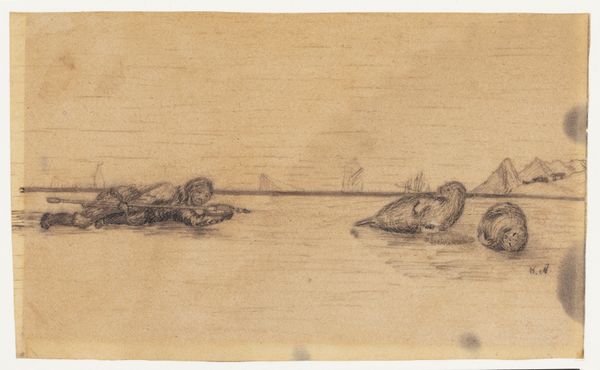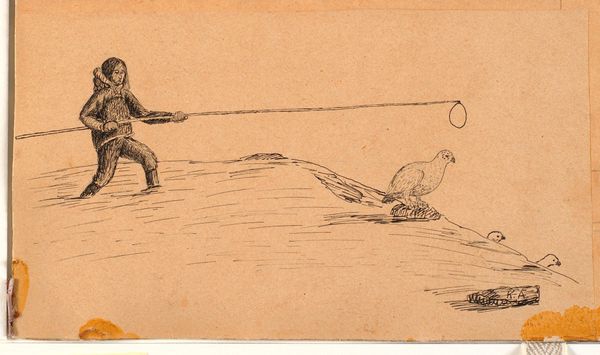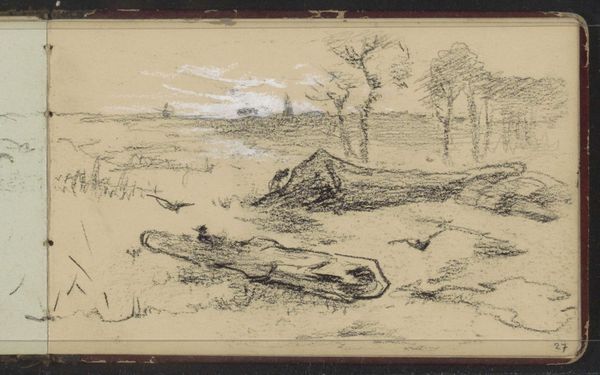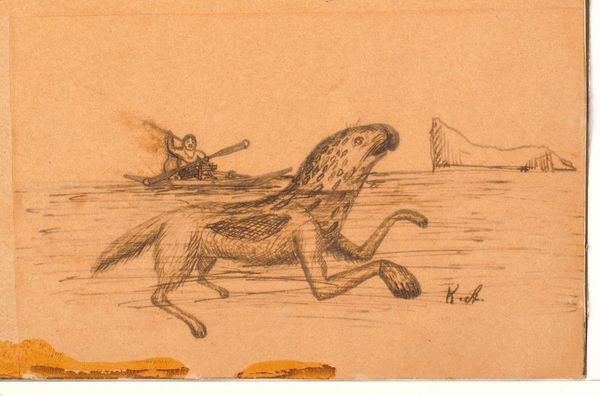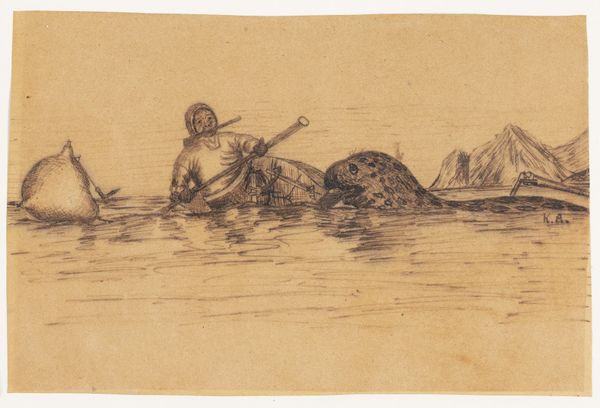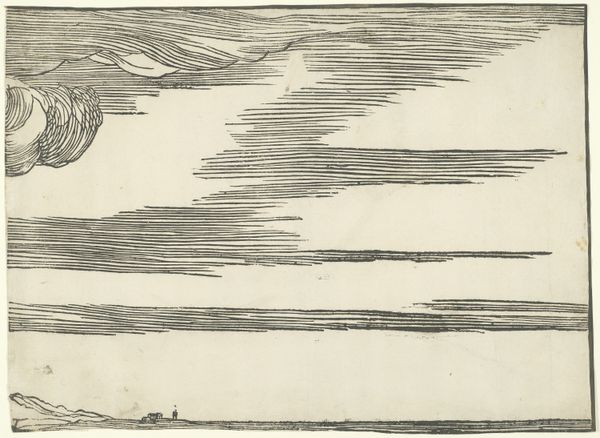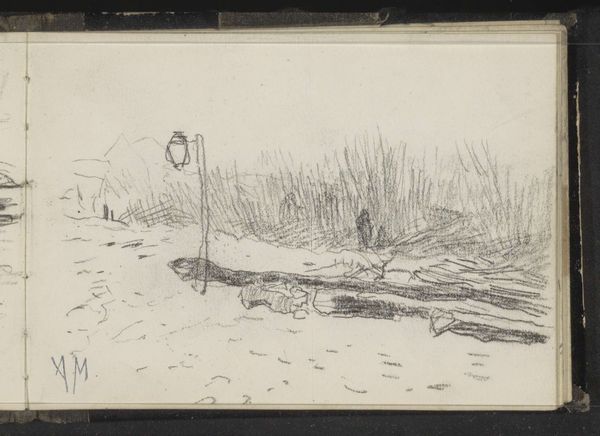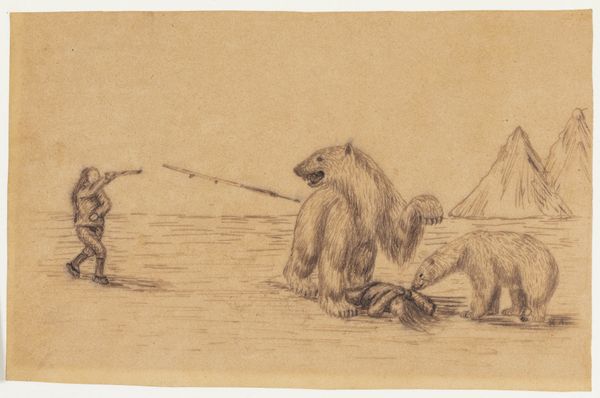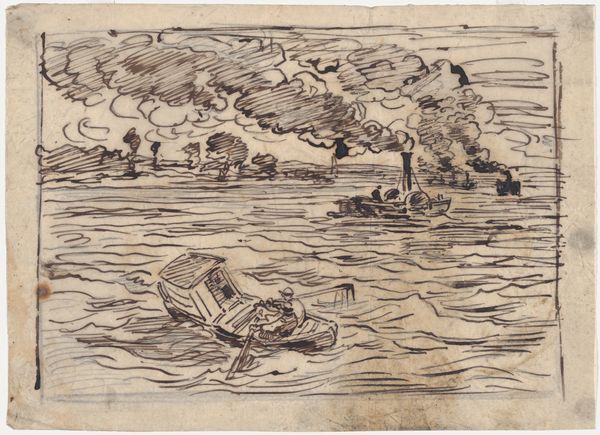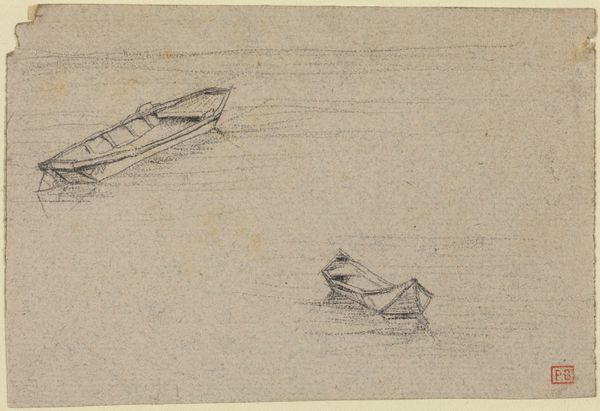
drawing, pencil, graphite
#
drawing
#
pencil sketch
#
landscape
#
etching
#
pencil
#
graphite
#
realism
Dimensions: 141 mm (height) x 199 mm (width) (bladmaal)
Curator: This pencil and graphite drawing, likely made between 1920 and 1934, is by Greenlandic artist Kaarale Andreassen. Its title translates to "Kayaker Harpooning a Diving Seal." Editor: Stark! There's something about the sparsity of line here; the near monochrome quality creates an evocative, desolate atmosphere. The clouds, mere suggestions of swirling forms, feel heavy. Curator: Andreassen’s work documents traditional Greenlandic life during a period of significant cultural change. His art serves as a valuable record of Inuit hunting practices. Consider how this artwork humanizes a life centered around hunting. It captures not only the act but its spiritual and practical dimensions. Editor: Precisely! The texture he achieves is also crucial, especially the jagged lines illustrating the water’s edge—almost brutal. Note the confident simplicity, but with a highly skilled hand; this creates such impact. There is such dynamism within an image seemingly so empty of detail. Curator: I agree, although I also note the artist’s engagement with colonial influence through, ironically, the stark realism of this medium. There’s a tension here: the artist documenting a traditional culture but operating within a representational paradigm imported from Europe. Editor: You know, that sparse and barren landscape speaks of struggle, maybe the struggle between culture and nature. In terms of the pure art, it’s a fascinating example of minimalist art. Its aesthetic strengths are a masterclass in reducing visual language to its core. Curator: Yes, and to further its social value: these pieces provided valuable historical context about Greenlandic life and history through the lens of its cultural traditions, in this case for generations to come. Editor: Ultimately, an economy of line generates vast space here, and both physical and imaginative.
Comments
No comments
Be the first to comment and join the conversation on the ultimate creative platform.
